How to make a drywall wall?
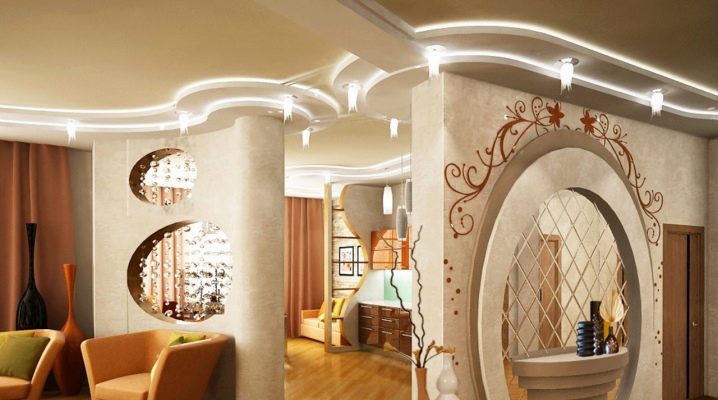
The layout of any living space is a purely personal matter, and what one likes may not suit others fundamentally. In order to be able to make your own adjustments, to reshape the space for yourself, there is a simple but reliable method, which involves the use of drywall sheets, with which even a beginner can work. The main thing is to know exactly how to make a wall from this material.

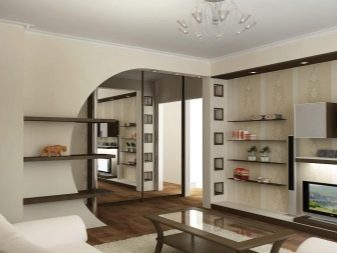
Peculiarities
The house is a real fortress for everyone, that is why it is so important to equip it in such a way as to feel confident, comfortable and good in it. Buying a new home or changing the number of residents of an old one may require redevelopment of the space so that everyone is comfortable in it. An additional room may be needed in the old house if the family is replenished or one of the relatives needs a private closed space in which to be alone.
Particularly acute is the issue of planning in new free-type buildings.where there is no clear framework for the premises, and each tenant can make the design that he likes. It is possible to erect brick walls, this has its advantages, because such a structure will last a long time and nothing will happen to it. But it is not easy to build such walls, and most importantly, it requires a large amount of materials. For those who have never laid a brick, it will not be easy to cope with this task and make a high-quality and durable partition.
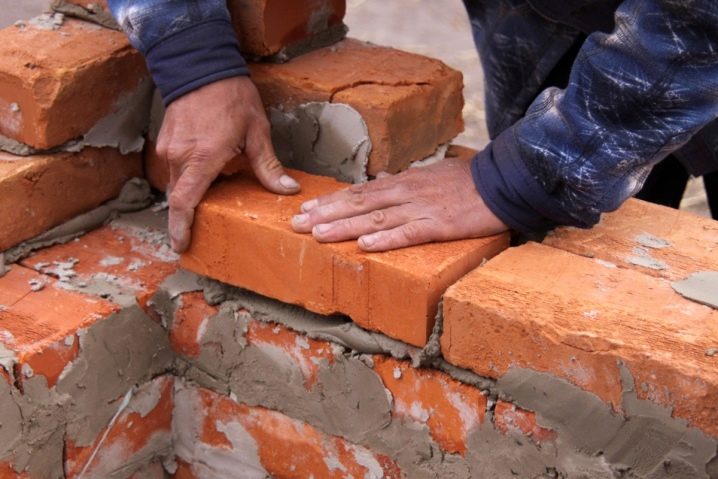
In view of all these circumstances, one of the simplest and most convenient options is the construction of drywall walls. Such designs are easy to make on your own and this process can be done even by non-professionals. In this matter, it is important to know what is needed to build a wall and what difficulties you will have to face.
Plasterboard wall has a number of important advantages compared to brick - it is easy to install, does not create a lot of weight on the floor due to the frame of thin profiles and simple sheets, the thickness of which does not exceed a centimeter.
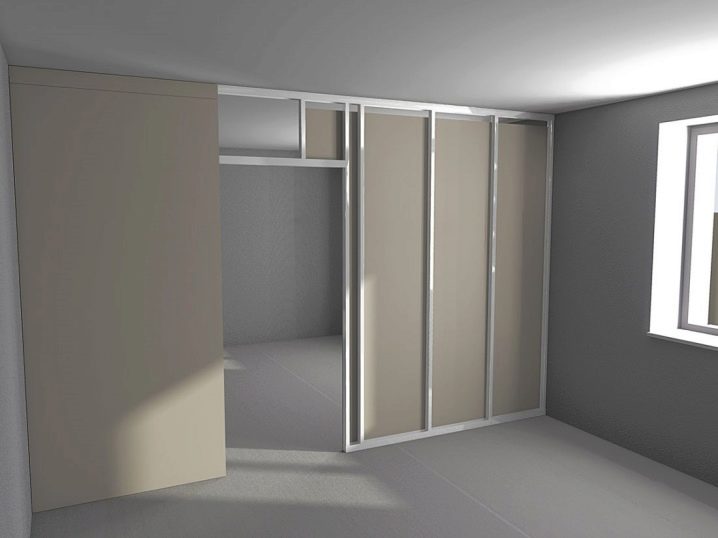
Another factor that can be considered an advantage of such structures is the possibility of erecting partitions, walls and walls without obtaining the appropriate permission for redevelopment, which will speed up the process and save you from unnecessary procedures. To work on creating new boundaries of the room, you need to determine what and where will change, mark the territory and calculate how much materials will be needed.
Plasterboard sheets are quite compact in thickness and when stacked one on top of the other, you can bring a lot of material at once. Its weight is also small.

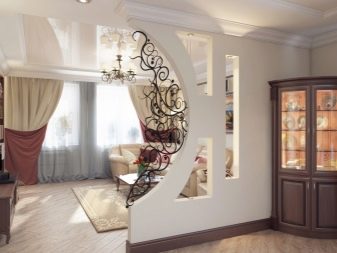
In order for the new walls to be warm and not to allow sound to pass through, insulation and sound insulation are placed inside the structure. It is possible to carry out wiring in it, install a switch and an outlet so that the functionality of the room does not suffer from its redevelopment.
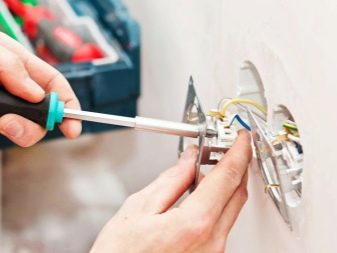
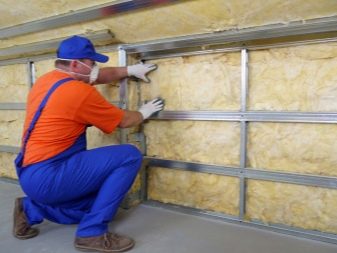
When planning the alteration of large-scale objects, it is important to understand how justified the use of this or that material will be, therefore you just need to clearly understand what the pros and cons of drywall and what exactly it will allow you to create in a living room.
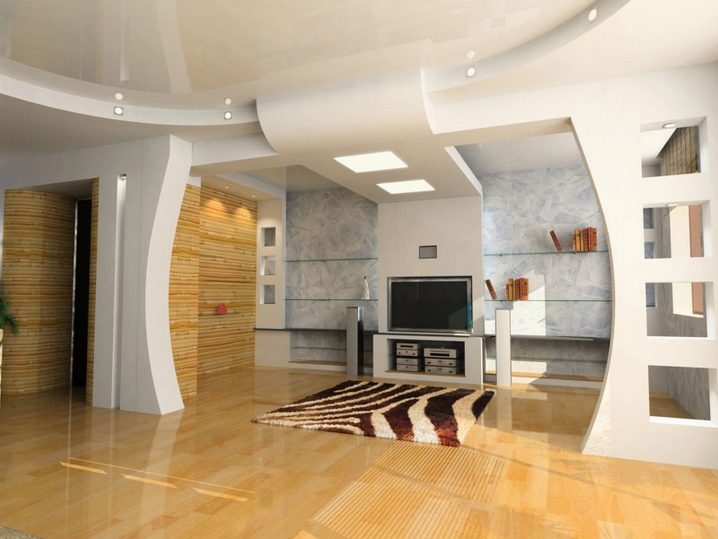
Advantages and disadvantages
The use of drywall made it possible to obtain fantastic opportunities that were previously extremely difficult, if not completely impossible, to implement, using brick as the main material and erecting walls, piers and partitions from it.
From this material indoors you can make:
- a wall that will divide the room;
- a partition that will allow you to zone the space or give a decorative effect due to an intricate design;
- a complex decorative concept and achieve original shapes and textures in the room.
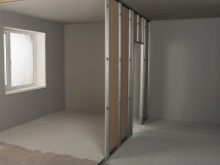
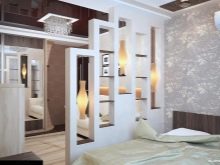
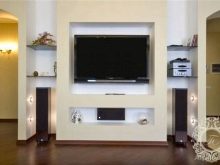
A feature of drywall is the ease of working with it. In order to build a wall, you need to form a frame and sheathe it with sheets. The frame structure can be either metal profiles or wood. The resulting structure is sheathed with plasterboard on both sides.
Sheets can be regular, waterproof and fire resistant, their choice will be dictated by the place where the new wall or partition is created. When one wall is sheathed, glass or mineral wool should be placed inside the structure so that the walls not only help divide the room into two parts, but also serve as heating and sound protection.

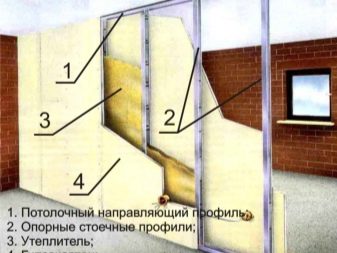
Among the advantages of this material are:
- ease of installation of structures of any type and complexity;
- the ability to erect structures of any shape and type;
- when carrying out work on the construction of walls or partitions, you do not need to have any special or expensive tools;
- inside the wall, you can place wiring, telephone cable, air duct, which also makes it functional;
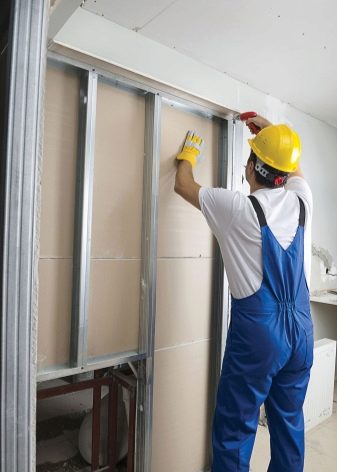
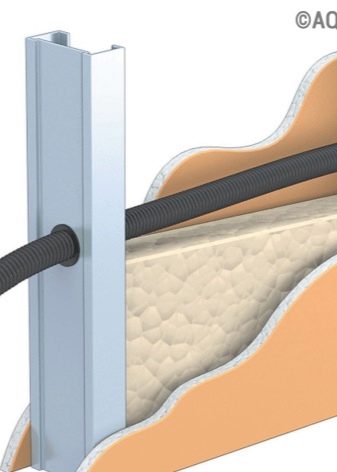
- the resulting wall will be absolutely flat and smooth, therefore, the work on its leveling will be reduced to grouting the joints between the plates and puttying the entire surface for further decorative work;
- after all the preparatory work, the finished wall can be painted in any color, pasted over with wallpaper or even tiled.
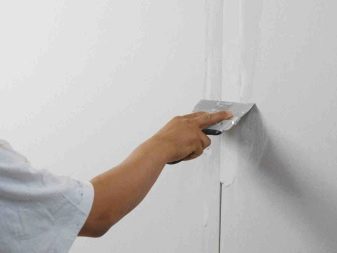
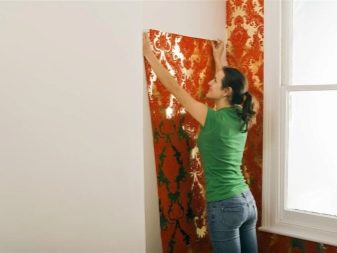
This material also has its drawbacks, which include:
- change in the properties of the material upon contact with water, drywall from this can swell;
- any load must be thought out in advance and the place of attachment of the picture, sconce, lamp or lamp must be initially reinforced;
- too heavy objects should not be installed on this surface, which should be taken into account initially when planning and determining the places of each decor element.
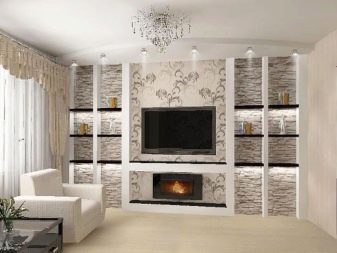
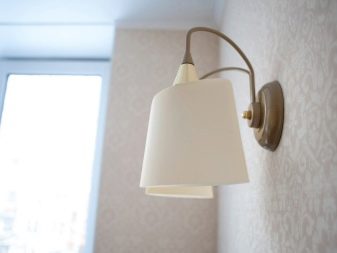
So, with the help of drywall, you can make a wall of any shape and appearance that you can imagine, while sound insulation and heat in the room will be at a high level, because for this, the appropriate filling is placed inside the structure. Sockets with switches allow you not to limit the possibilities of a new space.
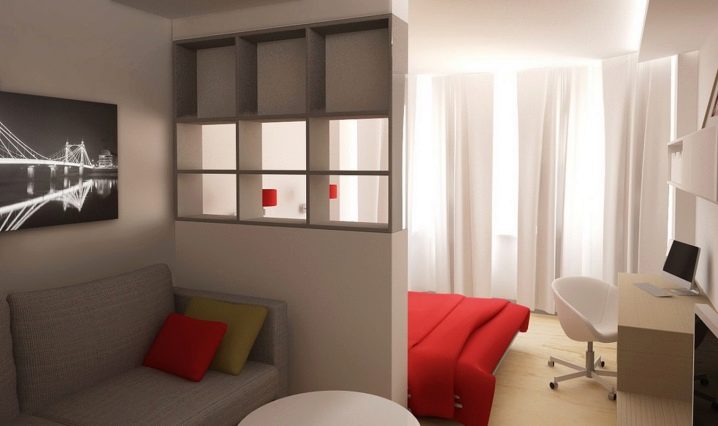
Materials and tools
When planning the construction of a drywall wall, you need to choose the right materials and have all the necessary tools with you so that the work process takes as little time as possible and does not take up a lot of effort and energy. In order for the wall to be strong enough, a frame from a metal profile is erected for it. There are different profiles for different purposes.
Most often, two options are used for such structures:
- A profile, but which will be attached directly to the drywall itself. It is smaller and is conventionally referred to as "D".
- The profile with which the main frame of the wall will be erected. It should be more powerful and larger, conventionally designated as "W".
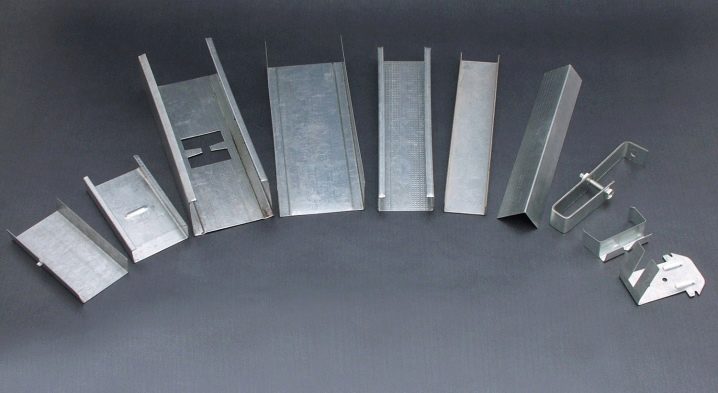
For each of the above profiles, there are two more options, one of which is support and is designated as "C", and the second is a guide and has the designation "U". The guide profile is simpler, it looks like a U-shaped structure and smooth walls. The support profile is inserted into it with the end. It also has an additional difference from the guide in the form of ribbing, which gives greater strength to the material and does not allow spontaneous bending.
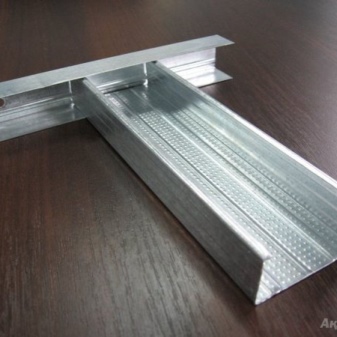

As the main supporting element of the frame, you need to use a support and a smaller profile, to which the drywall sheet will be attached. Its size is 60 by 27 millimeters. As guides for securing such a structure, you need to use a narrow guide profile with dimensions of 28 by 27 millimeters.In order to form the wall frame, you need to take a support and a large profile with dimensions of 50 by 50, 50 by 75 or 50 by 100 millimeters. As a guide for this design, a large guide profile with dimensions of 50 by 40, 75 by 40, 100 by 40 is used.
There is another version of the profile, which is a thicker and stronger version of the supporting large profile. For the construction of simple walls, only wide profiles are used, but for more complex structures in which it is planned to lay any communications, it is already necessary to use thin profile options.
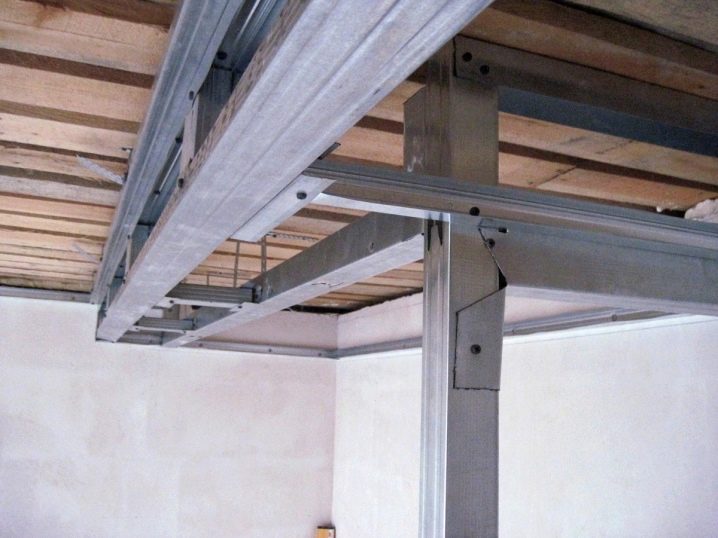
In order for the profile to be connected into a frame, you need to have a direct suspension or use a universal connector. The twisting process is carried out using small self-tapping screws, which have a drill at the end. In addition, special self-tapping screws for metal are used, which have a countersunk head. To fix the frame to the wall, you cannot do without plastic dowels and shock self-drilling.
The optimal thickness of drywall sheets for a wall is 12.5 millimeters. An obligatory element should be a wide bevel on the side of the sheet. Depending on the room, you need to choose the appropriate material - a moisture-resistant sheet is needed for the kitchen and bathroom, and an ordinary one is also suitable for an ordinary room. A distinctive feature will be the color - for moisture-resistant sheets it is green, for ordinary sheets it is gray.
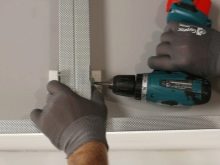
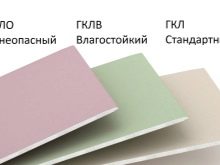
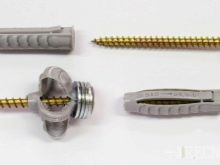
Thus, the crate of a drywall structure is most often made from a metal profile, but in some cases wood can also be used. Depending on the type of construction, it will be possible to choose one or another material and select its thickness.
Tools that will be needed during the construction of walls from plasterboard sheets:
- tape measure at least 3 meters long;
- level 80 or 120 centimeters;
- plumb lines;
- fishing line with rope;
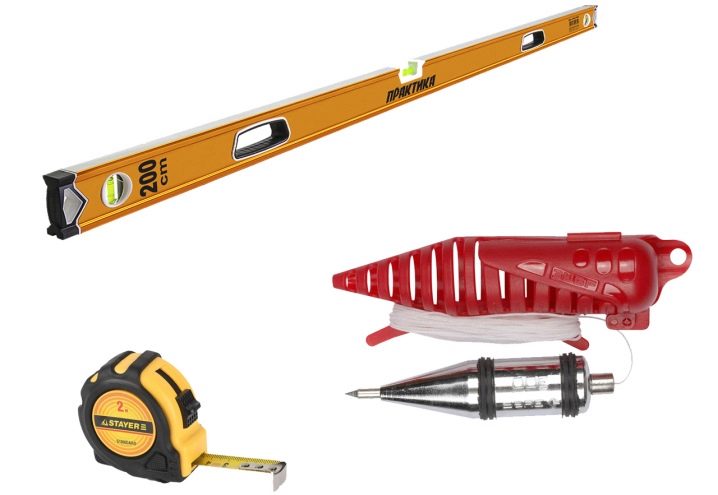
- cordless or cordless screwdriver, impact drill with attachments for self-tapping screws;
- puncher;
- scissors with which you can cut metal;
- construction knife for cutting drywall sheets;
- plasterboard float.
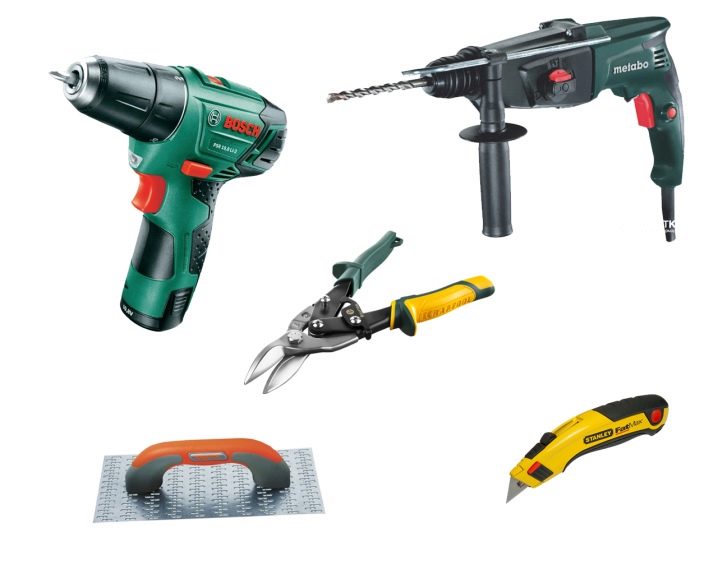
Frame
In order to make a high-quality and even drywall wall, first of all, it will be necessary to erect a metal frame, on which the sheets will already be attached. In order for the installation to be carried out correctly, certain patterns must be taken into account. The first step will be to mark the area where the construction is planned. The next step is to check the evenness of the corners.
Due to the fact that the walls in the room are often not too even, when building a new wall, you need to focus not only on one wall, but also take into account two opposite sides. If the walls have too uneven corners, the easiest way is to cover each of them with drywall, which will allow them to be aligned. Only after that, approach the installation of a new profile.


A laser level is best to level the posts., but if not, a simple plumb line can be used. Before mounting the profile for walls, ceiling and floor, you need to paste over it with a special sealing tape. It will help in shock absorption and sound insulation. Before you start attaching the profiles, you need to make a clear marking of the places on the floor, wall and shelf, where the base for the frame will be attached.
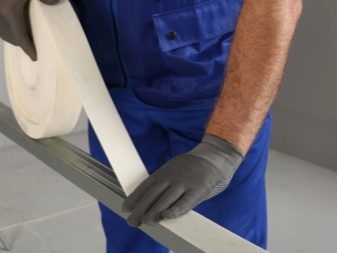
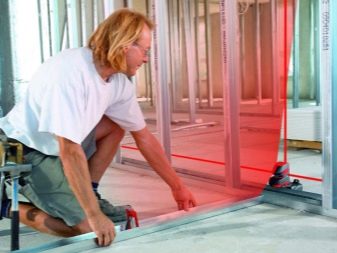
When everything is ready, you can begin to secure the guide profile, taking a step up to one meter. If the fastening goes to a wooden surface, then the distance is 50 centimeters and the adhesion is with self-tapping screws. If the work is done with a concrete surface, then the frame is screwed with dowels with a step of 75 centimeters. In this case, it is important to make the holes in advance.

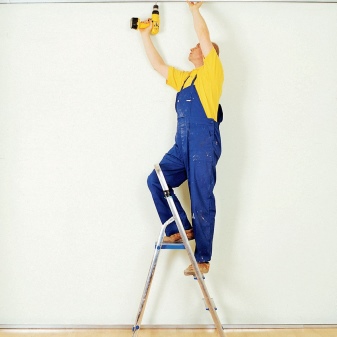
Both the bearing and the rack-mount profile can be attached to the wall, but it is important that it be solid. If the height of the canvases is more than three meters, then longer materials will have to be used for the structure.In the event that a door is planned in a new wall, it is important for it to leave an opening of the required width on the floor. In the case of standard door dimensions of 80 centimeters, it is important to make the opening 8 centimeters wider in order to be able to install the door frame.
The rack profile is installed from the doorway and determines its width. The first place for fixing the profile is the floor, then the level of the entire structure is checked and it is attached to the ceiling. The racks can be installed in any step, it depends on the drywall sheets. Most often they are installed as a fastening tool for sheets at the edge and in the middle of the entire structure. The joint of two sheets should lie clearly in the middle of the profile.

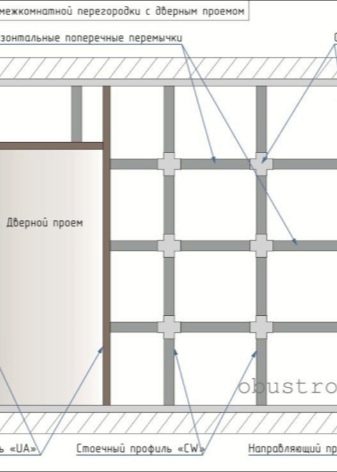
If the racks are installed often, then the strength of the wall increases, it will withstand a lot, but the cost of the work also increases. As for the profile framing the doorway, for greater rigidity, a wooden block or a bearing profile can be placed in it. You can also use transverse spacers, which are also reinforced with a bar and installed where there is a horizontal drywall joint.
The doorway from above is additionally equipped with a lintel. The installation height depends on the dimensions of the door. If it is two meters, then the jumper should be installed at a height of two meters and five centimeters. They make it from a rack profile, which needs to be cut off longer - not 20, or even 30 centimeters. After stepping back 10 or 15 centimeters from each side of the profile, you need to make an incision at 45 degrees. The bevel must point outward.
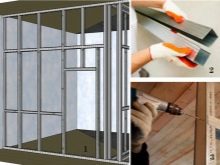
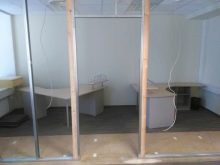
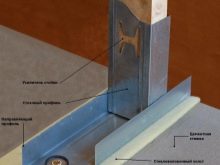
The sides that have been cut must be bent down and the structure is U-shaped. The vertical parts must be put on the racks and secured with self-tapping screws for metal. When working with drywall sheets, it is important to use only special self-tapping screws that have a press washer. It is she who helps to easily pass through the canvas, while not damaging the cardboard and allowing the cap to go deeper to the required distance.
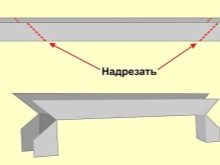

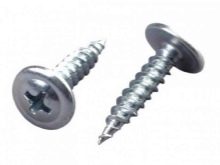
Step-by-step installation instructions
If you need to create a drywall structure with your own hands, you need to properly organize the course of work. The first thing that is necessary is to level the floor and walls to which the structure of the future wall will be attached. Only then can you make the markings on the floor, taking into account both parallel walls to derive the correct angle for the structure. If the adjacent walls are also covered with plasterboard, then initially a crate is erected for them, and after that the installation of the frame for the new wall begins.
According to the markings that are applied to the floor and walls, only the profile needs to be leveled, and the width of the entire wall will increase after installing the gypsum board and putty. It is definitely worth noting the location of the doorway, if it is provided. After the markings are completed on the floor, the next step is to mark the wall and ceiling. To make everything perfectly accurate, it is better to use a laser level. If one is not available, a simple plumb line will do.
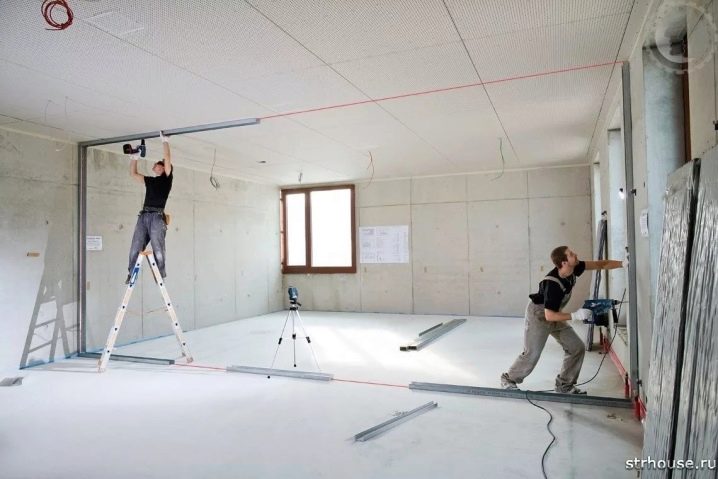
When everything is ready, a metal frame is erected. The first profile is fixed to the floor with dowels. The second stage is the erection of a part of the structure on the ceiling. When both parts are ready, they are connected to a common structure using CW support legs. If there is a door or window, you need to use the same racks for them. Installation takes place from the bottom up, the front side should be directed inside the window or door openings.
The next step is the installation of vertical supports from the same CW profile with a distance of 55 and 60 centimeters from each other. When everything is ready, all supports are checked by the level. After that, work is underway to set the horizontal edges with the UW profile. When all this work has been completed, you can begin to fasten drywall sheets.
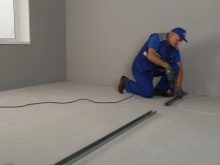
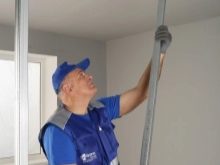
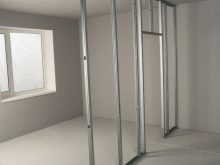
Based on the fact that this material has standard dimensions of 2 by 1.20 m, 2.50 by 1.20 m and 3 by 1.20 m, different dimensions will be needed for different ceilings. If the room is not high, then the sheet will most likely have to be cut; the same principle is used for ceilings over three meters, when the length will have to be increased.
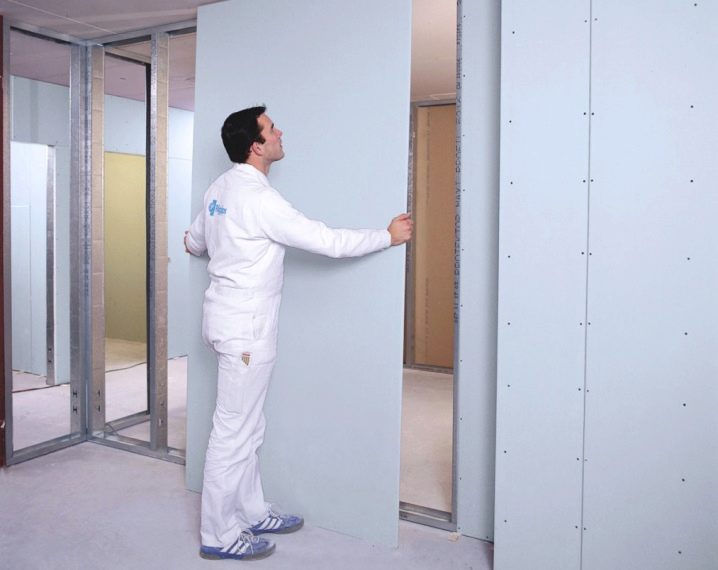
In order to cut the sheet, use a construction knife.
The cutting process consists of the following stages:
- laying the sheet on a surface that should be as flat and firm as possible;
- you need to draw a line along which the cut will go with a pencil;
- you need to cut it carefully and only the cardboard itself;

- the sheet is shifted to the edge of an even support to the drawn line, by pressing it is necessary to make a break along it;
- turn the drywall over and draw the same line on the back side along which to make the same incision;
- displace along the notch line, push and completely break the gypsum board.
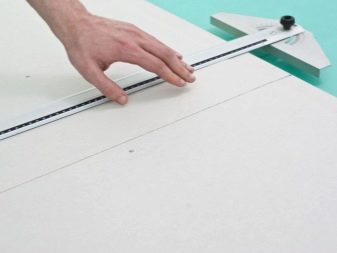
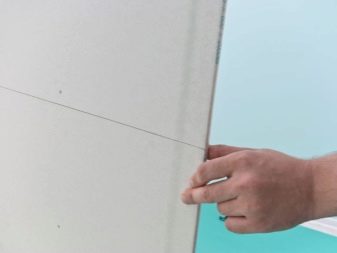
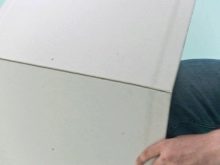
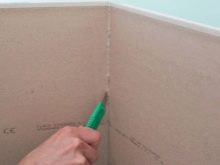
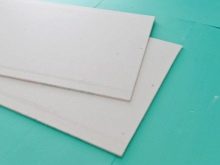
The extreme part is recommended to be slightly beveled, which will contribute to a better finish of the finished wall. To give this shape, it must be cut down with a drywall float.
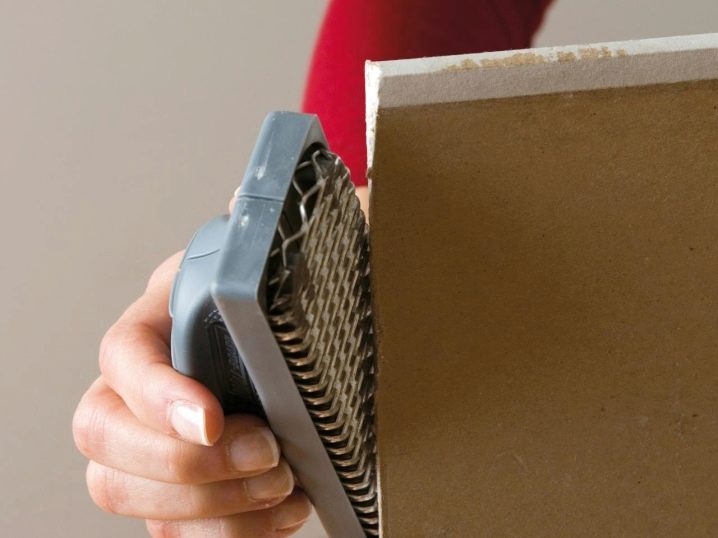
The next step will be to attach the plasterboard sheets to the finished frame.
This requires:
- On the first sheet, a side chamfer is removed, for which a strip of 55 millimeters is cut.
- Fastening of sheets is carried out from the lower corner of the wall. It is important to make a small indent from the floor of 10 or 15 millimeters.
- Fastening the sheet to the crate using self-tapping screws 3.5 x 35 mm. The edges are attached first, and then they move to the middle. The width from the self-tapping screw to the self-tapping screw should not exceed d25 centimeters. The hats must be slightly deepened into the surface of the sheet.

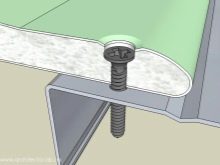
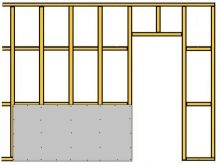
- After installing the first drywall element, you need to measure the distance that remains to the ceiling and cut off the corresponding piece.
- Forming a chamfer on a sheet.
- Install it on the frame.
- It is important to fasten the following sheets in a checkerboard pattern, but here you do not need to cut the chamfer. This is how the whole sheet is fastened, without cutting. The fixing goes from the ceiling to the floor. Thus, the entire side of the future wall is sheathed.
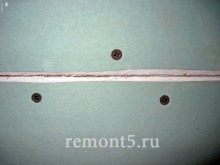
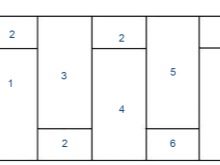
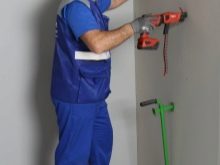
Once the work on one side has been completed, it is important to consider whether wiring and telephone cables will be needed in the new room. If so, the next step is to install them. For wiring, it is necessary to prepare corrugated pipes and bring wires into them. After that, it is necessary to make holes with a diameter of 3.5 cm in the profile and thread pipes with wires through them. It is important to decide on the holes for the sockets and the switch and make them in advance.

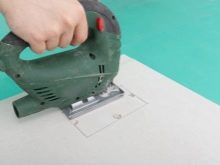

To build a high-quality wall, you need to supplement its interior with appropriate materials., which will have sound insulation and will make it possible to feel confident and comfortable, as if behind a stone wall. This must be done correctly, using a roll of mineral wool with a thickness of 6 or 12 centimeters. The cotton wool fits tightly between the profiles, this will be enough for good fixing. After everything is done, you can put up a second wall.
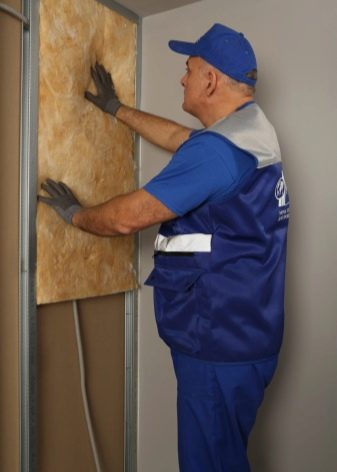
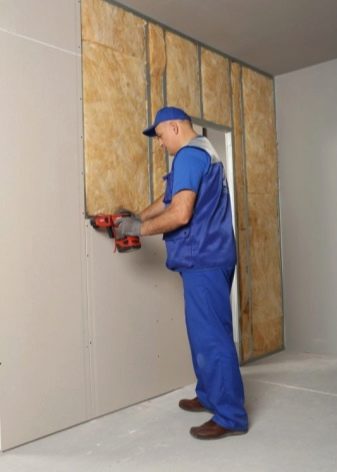
The technology of its sheathing is the same. As soon as all the installation work is completed, begins a new stage where the finished wall is processed:
- the joints between the drywall sheets are glued with a serpyanka;
- processing the wall with starting putty;
- finishing the wall with a finishing putty, leveling the places where the screws are located;
- grouting the putty with sandpaper;
- decorative wall decoration.
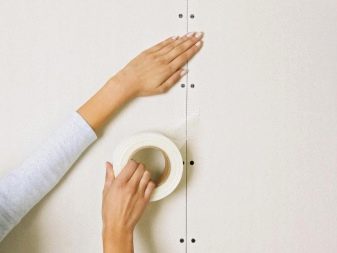
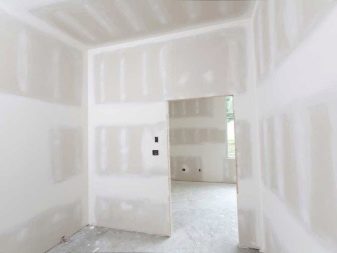
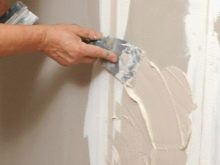
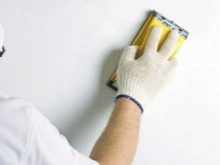
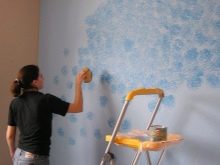
A false wall can be ready quickly enough, it all depends on the skill of the master and his experience. A beginner can also assemble such a structure, it just will take him more time.
Interior walls will serve for a long time, the main thing is to monitor the conditions of their operation. As a decor for such elements, you can use paint, wallpaper or tiles, it all depends on the room, interior and the wishes of the owners themselves.

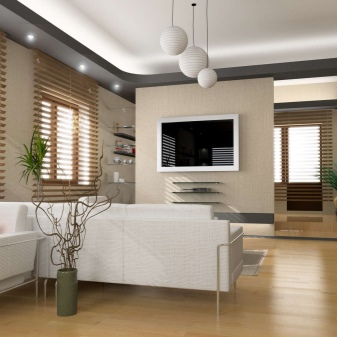
Design
Drywall is a very convenient material for work, especially for creating interesting and unusual images in the interior. This becomes possible due to the fact that sheets can take on a wide variety of shapes, they can not only be cut, but also bend, for which it is enough just to wet the sheet and give it the desired shape.
You can use this material anywhere - both in a private house and in an apartment, and in each case, the design can be completely different. The options for how a particular space might look can differ in style, shape, and texture. It is possible to erect structures with gypsum board in the bathroom, bedroom, corridor and any other room, only the finishing material will differ. For rooms with a high level of humidity, moisture resistant sheets are used.
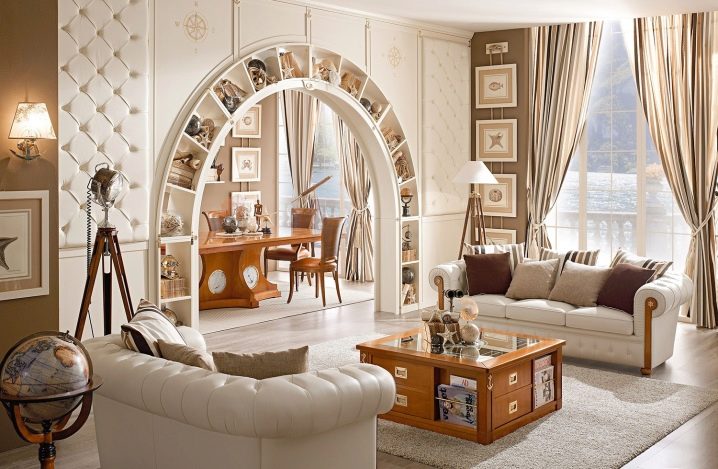
A false wall is completely similar to a conventional one, moreover, it can be equipped with a door and fully serve its owners to separate certain areas of the room. To fulfill such an idea, when designing, they leave room for an opening and later place doors in it.


For zoning space, it is not necessary to erect entire walls, you can limit yourself to a small partition that will look spectacular with backlighting from above and decorative boxes. The implementation of the partition as a non-continuous sheet allows to give the structure lightness. Equipped with shelves will help add coziness and hide small things in a secluded place. This option works best for the living room, but you can use it in the hall as well.
A distinctive characteristic of drywall is the ability to apply any decoration methods to it. To create a cozy atmosphere in living rooms, you can glue wallpaper on the finished wall or paint it in any color and even overlay it with natural or artificial stone. The latter option is especially well suited for a fireplace, which can also be made from gypsum plasterboard. In the kitchen or bathroom, the dyeing option is also suitable, but you can also put tiles to precisely protect the walls from excess moisture and create a full-fledged feeling of a real brick wall.
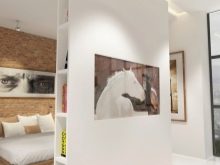
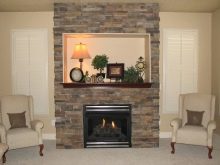
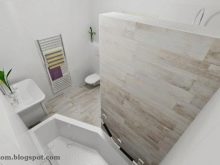
Advice
When planning the construction of a plasterboard wall, it is initially necessary to prepare the room. There should be nothing superfluous in it, because it will not be easy to place a sheet 2 or 3 meters long in it. The room should be clean enough so that the drywall sheets do not get dirty, because then you will need to get rid of the stains so that they do not appear on the surface of the wallpaper or paint.
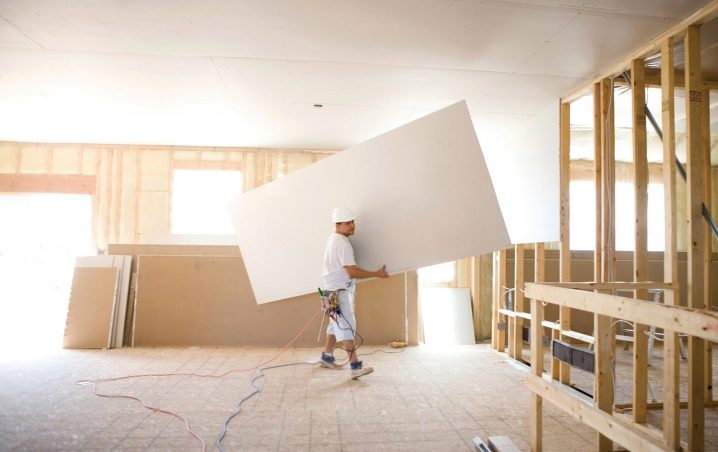
It is important to plan the room correctly, take into account the heating system, and if necessary, bring the batteries into the new living space. It is also necessary to take into account the light that will be blocked by the new structure. If the windows are located only on one side, it is important not to completely block access to them.
If not a wall is formed, but a partition, it is better to make it with shelves, and not a solid structure, which will allow both the space to be divided, and the storage area to be made, and the access of light to the second part of the room.
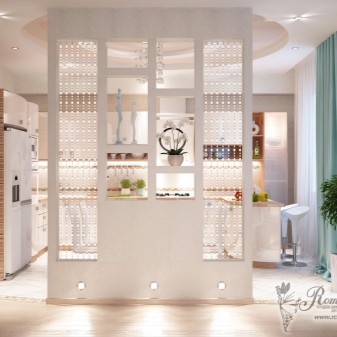
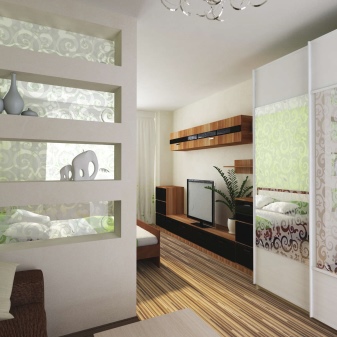
Examples in the interior
A plasterboard wall can become a real highlight in the interior, the main thing is to correctly approach the process of its design, choose the right materials that will help decorate the room and emphasize its features.
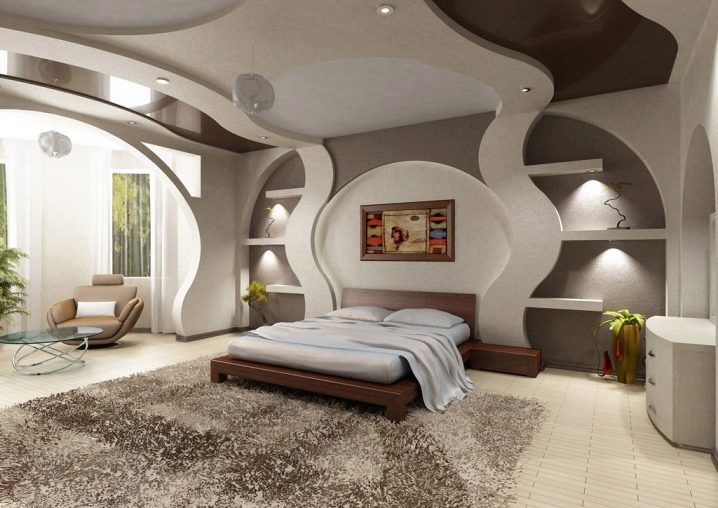
In the bedroom, using drywall, you can create an original and unique design. The wall by the bed is decorated with flowery lines, soft shapes add coziness and contribute to a good rest. The presence of shelves allows you to store small things there and use them as a place for lamps.
For the living room, especially when it borders on the kitchen and is not separated by walls, you can use the original semicircular structure, which rises from the wall to the ceiling. The space is divided into two zones. In this case, using white is the best way to increase the space of both areas.
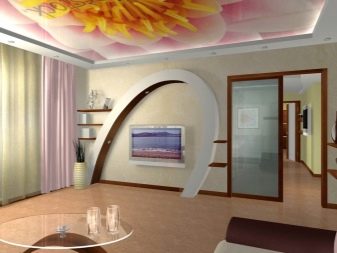
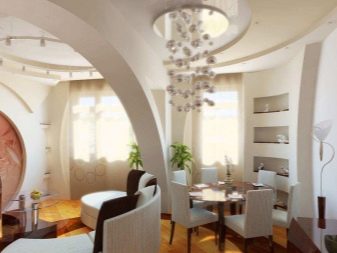
A plasterboard wall can be designed immediately with a doorway to divide the space between two rooms. Doors can be single or double, with glass or dull, it depends on the design of the room.
For information on how to make a drywall partition, see the next video.













The comment was sent successfully.